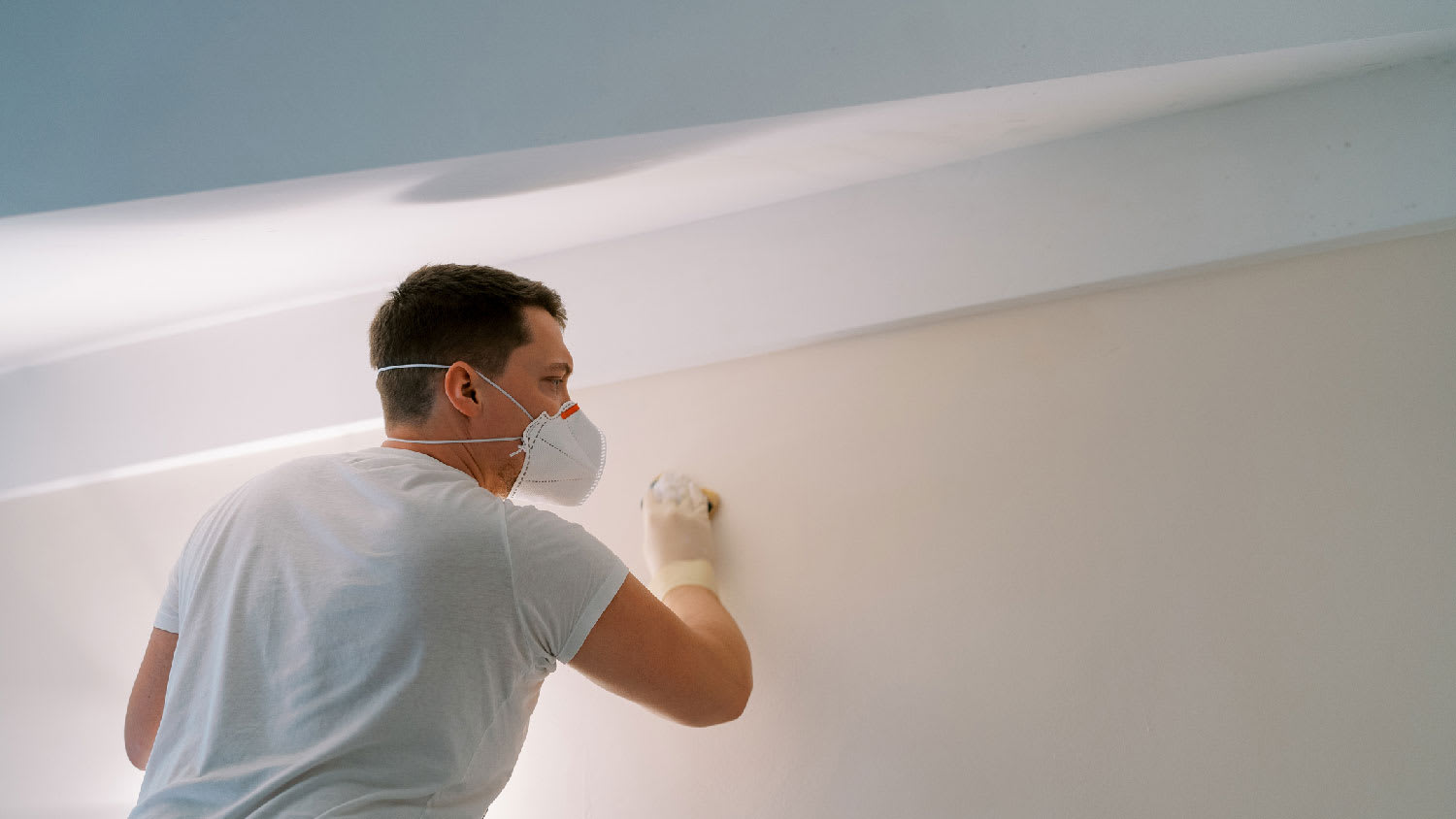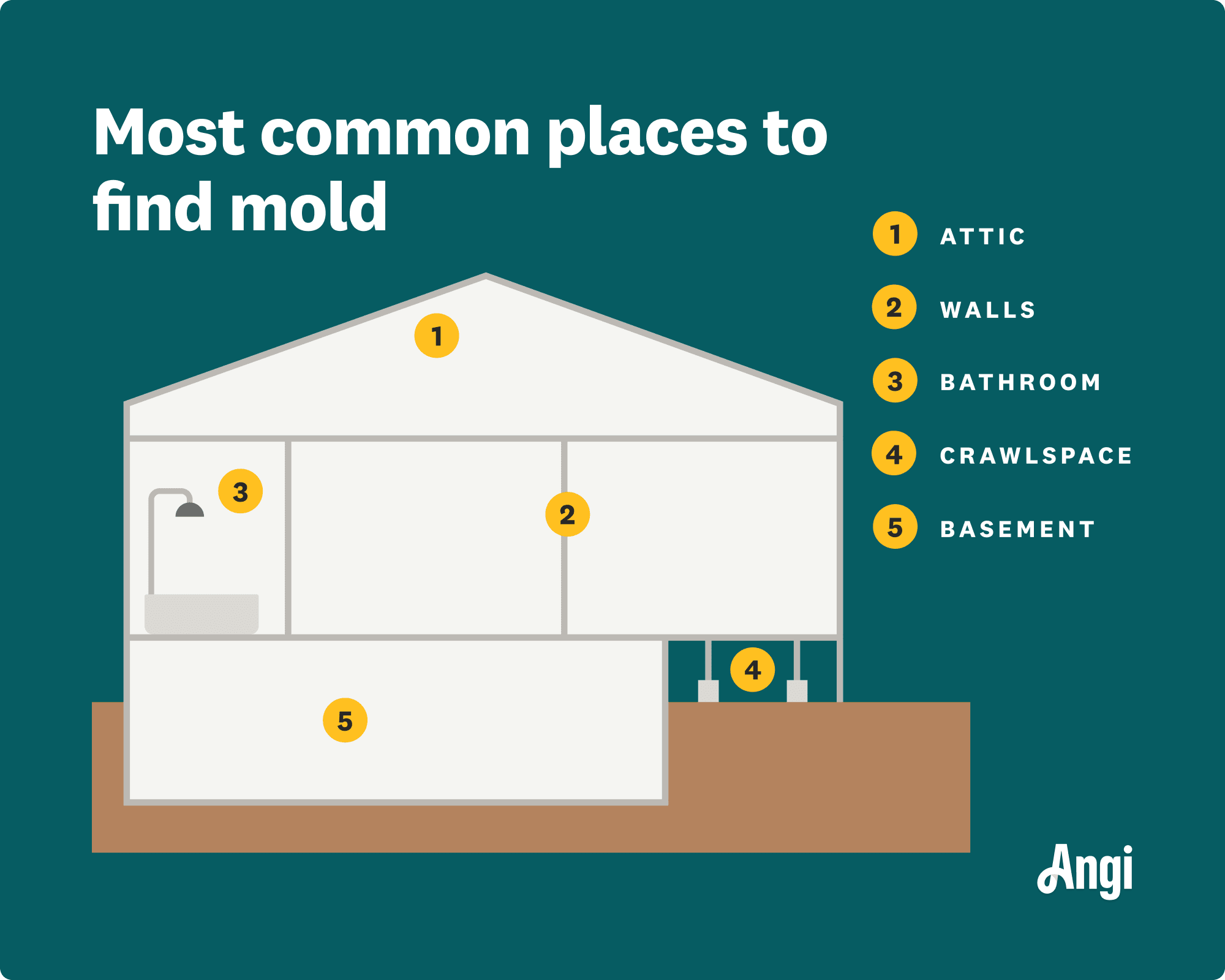
The cost of a mold inspection might seem high, but it’s one of the best investments you can make for your health and home. Read on to learn cost-saving tips.
Mold remediation costs in Philadelphia, PA, cost $2,438 on average, but it can cost between $1,298 and $3,661, depending on location, type, and size of infestation.


Philly’s older housing stock makes addressing mold issues a bit trickier.
Mold patches spread fast behind plaster or brick, turning less costly jobs into pricey ones.
Black mold loves damp basements in Philly, and pros need special gear to chase it out.
Flat roofs and worn siding leak, potentially driving your out-of-pocket costs higher.
The truth is, many rowhouses, historic brownstones, and basements seem to collect water like it’s their job. All of this dampness creates an ideal environment for mold growth. Philly’s summer humidity only makes matters worse, and leaks from those classic flat roofs don’t help either.
On average, mold remediation in Philadelphia, PA, will set homeowners back $2,438, with prices typically ranging between $1,298 and $3,661, depending on the issue’s magnitude.
For homeowners in Philadelphia, PA, the factors driving mold inspection and remediation costs are a little different than those in newer cities. For one, the city’s housing stock is among the oldest in the nation. Many homes predate modern ventilation systems and feature plaster walls or brick basements that trap moisture. That makes addressing mold harder, and sometimes pricier, because contractors must work carefully around fragile building materials.
Philly’s climate also plays a significant role. Warm summers with high humidity levels make mold like Aspergillus and Stachybotrys, commonly known as black mold, ubiquitous in the area. Add in the city’s many basements and crawl spaces, and you’ve got plenty of hiding spots for infestations.

It costs more to remove mold from certain areas of your home than others. For instance, mold growth in hard-to-reach areas, like in your HVAC system or drywall, can require more time and materials to remove than mold in very accessible areas, driving up costs.
| Location | Average Remediation Cost in Philadelphia |
|---|---|
| Attic | $1,031–$4,124 |
| Basement | $516–$3,093 |
| Crawl space | $516–$2,062 |
| Wall | $1,031–$20,620 |
| HVAC systems | $3,093–$10,310 |
| Bathroom | $516–$1,031 |
| Whole house | $10,310–$30,930 |
Most mold removal professionals charge a tad more than $10 to $25 per square foot. So, if you're removing mold from a 100-square-foot area, you can expect to pay around $1,031 to $2,500. But factors like where the growth is and the mold type can affect how much it costs to remove it.
Mold inspection costs between $310 and $1,108. Mold testing is key to determining whether you have the presence of mold in your home, plus the extent of the infestation. You’ll need to hire a mold inspector to test surface samples in your home before moving forward with remediation.
Regardless of how it affects remediation costs, you need to know which type of mold you have in your home for your safety. That said, if a mold test reveals the presence of black mold, your mold remediation pro will likely charge more to remove it based on the additional cost of protective equipment.
| Type of Mold | Description |
|---|---|
| Alternaria | A common mold found outside in spring and summer, it primarily attacks plants. |
| Aspergillus | White fuzz that turns black over time, but it can also be brown, yellow, and green. It can cause respiratory illness and requires immediate remediation. |
| Aureobasidium | Grows on painted surfaces and behind wallpaper. It’s often pink and causes allergies. |
| Chaetomium | Extremely toxic and can cause brain infections and various cancers. A white fuzz that turns to blue or green. Requires immediate professional removal. |
| Cladosporium | Commonly found in basements and HVAC systems. It can cause mild allergy symptoms. |
| Fusarium | One of the most toxic molds; requires professional removal once discovered. Often caused by water leaks, it is commonly found in walls and floors. |
| Penicillium | Blue-green and grows in areas of elevated moisture where water damage has occurred. It can be very dangerous. |
| Serpula lacrymans | Causes severe damage to wood and spreads fast. Unfortunately, this mold is usually found after it has spread widely. |
| Stachybotrys chartarum (black mold) | Extremely dangerous, not to mention fast-spreading. Requires immediate removal by a professional. |
| Trichoderma | Grows rapidly in wood, plants, and soil. Commonly found in HVAC systems and not as widely discovered as others in this list. |
| Ulocladium | A dark-colored mold found near windows and in kitchens and basements. Looks like black mold, but it isn’t as toxic to humans. Nevertheless, it still requires removal. |
If left untreated, mold can damage your drywall, carpeting, and flooring. Replacing or repairing your walls or floors will add costs to the removal.
Here are some cost estimates for different types of mold damage repairs in Philadelphia, PA:
| Repair Type | Average Cost in Philadelphia |
|---|---|
| Drywall | $1,031–$2,990 |
| Carpet | $799–$2,681 |
| Flooring | $206–$568 |
When hiring a mold remediation pro in Philadelphia, contractor demand, crew size, and the cost of disposing of contaminated materials all affect the bottom line. You must also factor in local rules, taxes, and the city’s higher cost of living. Here’s what to know when you budget.
For simple mold cleanups, pros usually don’t need permits. However, if you need to remove walls or replace insulation, you’ll have to pay for a contractor. These pros will work with Philadelphia’s Department of Licenses and Inspections to ensure compliance and avoid fines.
Pennsylvania doesn’t issue a mold removal license, but many specialists hold professional certifications that prove their expertise.
Mold remediation in Philly reflects local economics. The cost of living is 4% higher than the national average, and an 8% combined sales tax can increase the total price. However, it is essential to understand what is taxable:
Taxable repairs: Spraying or scrubbing mold from walls
Non-taxable improvements: Rebuilding drywall or replacing insulation
Owning a mold-free dwelling is definitely a boon for home value. If you're looking to sell, buyers care about safety, and a mold-free house signals a healthier environment. Remember to ask your mold remediation specialist for a mold-free certificate.
Your home's efficiency also improves, meaning energy savings, since dwellings free of excess moisture are easier to heat and cool. Plus, functionality increases when you can use basements, attics, or crawl spaces without worrying about dampness and mold.
Lastly, drastic remediation efforts that include new walls and fresh finishes will further boost your home enjoyment, not to mention your health, which is priceless
Home is the most important place on earth, which is why Angi has helped more than 150 million homeowners transform their houses into homes they adore. To help homeowners with their next project, Angi provides readers with the most accurate cost data and upholds strict editorial standards. We survey real Angi customers about their project costs to develop the pricing data you see, so you can make the best decisions for you and your home. We pair this data with research from reputable sources, including the U.S. Bureau of Labor Statistics, academic journals, market studies, and interviews with industry experts—all to ensure our prices reflect real-world projects.
Want to help us improve our cost data? Send us a recent project quote to [email protected]. Quotes and personal information will not be shared publicly.
From average costs to expert advice, get all the answers you need to get your job done.

The cost of a mold inspection might seem high, but it’s one of the best investments you can make for your health and home. Read on to learn cost-saving tips.

Common reasons for mold in kitchen cabinets include high humidity and leaks. Keep reading to learn more about why mold is growing in your kitchen cabinets.

What does black mold look like? It has a dark color and may appear slightly fuzzy. Use this guide to learn about the variations in black mold’s appearance.

Not sure what type of mold is forming in your home? We’re breaking down black mold vs regular mold.

Who pays for mold remediation? Your homeowners’ or property insurance may help you pay some of the cost of removing mold, but it depends on the situation.

Mold is a common concern for many homeowners, especially black mold. Is black mold toxic? Yes, and that's why you need to know how to identify it.